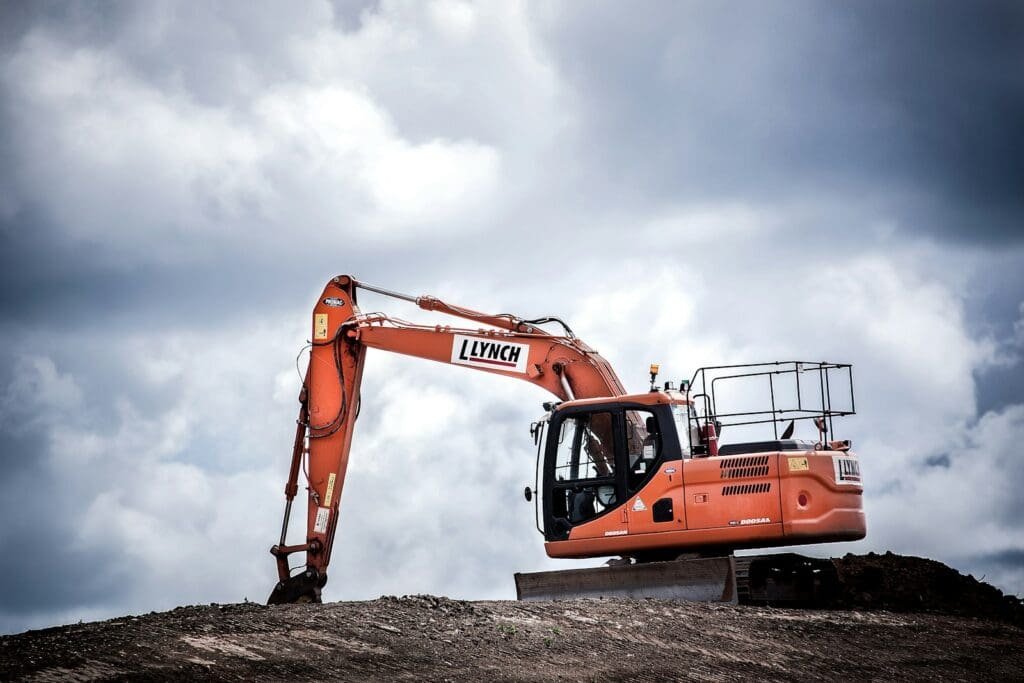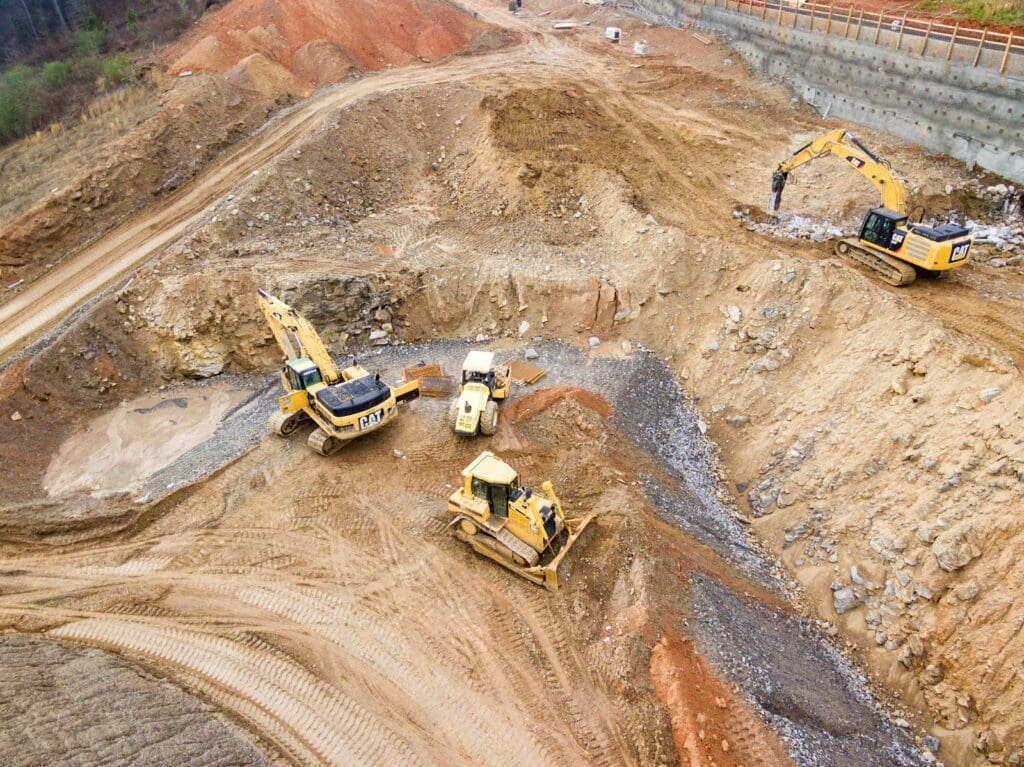Introduction to Site Preparation in Construction
Are you interested in learning the nitty-gritty of preparing a construction site before the actual building begins?
The process, perhaps more complex than you have ever imagined, forms the backbone of any successful construction project.
Can you believe that skipping rigorous site preparation can lead to not only structural issues but also serious delays in construction?
So, from defining site preparation to listing out its essential components such as site surveying, clearing, grading, soil testing, excavation, we will cover it all. Additionally, we’ll discuss the equipment used, regulations and permits applicable, and the emergence of modern technologies in this field.
We’ll finally take a closer look at the somewhat neglected but vital aspects of site preparation including site security setup, environmental impact assessment, and site accessibility improvement.
At the end, we’ll also introduce you to a handy site preparation checklist to ensure you don’t miss a single important step.
Table of Contents
Understanding Site Preparation in Construction

Definition of Site Preparation
Site preparation is the process of getting a construction site ready before building begins. This step ensures that the land is suitable for construction, addressing any issues that could hinder the project.
Key Components of Site Preparation
Site preparation involves several important tasks, each critical to the success of the project. Below is a breakdown of the main components:
1. Site Surveying
- Topographic Survey: Identifies the existing features of the land, such as elevation, natural landmarks, and man-made structures.
- Boundary Survey: Establishes the legal boundaries of the property.
2. Clearing and Grubbing
- Tree and Vegetation Removal: All trees, shrubs, and plants are removed to clear the site.
- Root and Stump Removal: Any remaining roots and stumps are taken out to avoid issues with the foundation.
3. Grading
- Cut and Fill: Soil is either added or removed to create a level surface.
- Slope Adjustments: Adjustments to the slope of the site to facilitate drainage.
4. Soil Testing
- Compaction Tests: Evaluating soil density to ensure it can support the structure.
- Soil Strength Tests: Determines if the ground can withstand the weight of the building.
5. Excavation
- Foundation Trenching: Digging trenches for the building’s foundation and footings.
- Utility Trenches: Preparing trenches for utilities like water, sewage, and electricity.
6. Utility Installation
- Plumbing: Laying pipes for water and sewage.
- Electrical Conduit: Setting up pathways for electrical wiring.
7. Erosion Control
- Silt Fences: Installing barriers to prevent soil erosion.
- Retention Basins: Establishing basins to capture and control runoff.
Equipment Used in Site Preparation
Various pieces of equipment are essential for completing site preparation tasks efficiently:
| Equipment | Function |
|---|---|
| Bulldozer | Clearing land and moving large amounts of soil. |
| Excavator | Digging trenches and removing debris. |
| Grader | Leveling the surface of the land. |
| Compactor | Compressing soil to increase its density. |
Importance of Proper Site Preparation
Failing to perform thorough site preparation can lead to various complications, including structural issues and construction delays. Ensuring proper site preparation is a critical step for any successful construction project.
For more in-depth information about site preparation, visit this detailed guide from Construction Placements.
Additional Aspects of Site Preparation

New Tasks in Site Preparation
Beyond the frequently discussed tasks in site preparation, there are additional necessary steps to consider:
8. Site Security Setup
- Perimeter Fencing: For utmost safety, a temporary fence should be erected around the construction site. This not only detains any debris caused by the construction but acts as a significant deterrent against vandalism and theft.
- Installation of Surveillance: Camera surveillance and a security team ensure further security of the construction site and equipment.
9. Environmental Impact Assessment
- Wildlife and Plant Evaluations: This involves the research of local flora and fauna, and measures to minimize their disturbance during construction.
- Waste Management Plan: Developing an efficient construction waste disposal strategy to protect the environment.
10. Site Accessibility Improvement
- Roadways: Develop road access to the site for the transport of manpower, materials, and equipment.
- Temporary Structures: Build amenities for workers, such as portable toilets, locker rooms, administrative offices, and first aid stations.
Modern Technologies in Site Preparation
Along with conventional equipment, modern technologies are now being harnessed for greater efficiency and accuracy in site preparation. Here are a few significant examples:
Drones
Drones offer an effective way to survey sites, especially extensive or inaccessible regions. They can map the geographical grade, detect hazards, and document construction progress.
3D Laser Scanning
This technology creates precise 3-dimensional models of the site. These models help in assessing different aspects of site preparation like evaluating topography and estimating cut and fill requirements.
GPS and Machine-Control Systems
Utilization of GPS and other machine-control systems empower construction equipment like bulldozers and excavators. This leads to more exact grading and excavation, saving time and resources.
Regulations and Permits
Construction projects should comply with multiple local and national building codes. Expert understanding and adherence to these codes prevent legal complications that could stall the project.
Building Permits
Before starting construction, it’s necessary to secure building permits from the local authority. These permits confirm that the proposed construction adheres to zoning rules, safety regulations, and environmental standards.
Environmental Compliance
Depending on the location, several environmental permits may be required. These can range from stormwater runoff permits to demolition permits if the existing structures need to be removed.
For more detailed information on building codes and permit process, an excellent resource is the U.S. Government’s official website.
What is a Site Preparation Checklist?
A site preparation checklist is a comprehensive guide used to ensure all necessary steps are taken before construction begins. This checklist helps in verifying that all tasks are completed efficiently, safeguarding against potential delays and complications.
Let’s explore the key elements and additional considerations that a thorough site preparation checklist should cover.
Critical Inclusions in the Checklist
Every site preparation checklist should include a range of tasks that are essential to establish a firm foundation for construction. While the main tasks like surveying and soil testing are critical, there are other crucial elements that should be part of the checklist.
1. Pre-Construction Approvals
- Permitting: Confirm that all necessary building permits, zoning approvals, and environmental permits have been obtained.
- Stakeholder Agreements: Ensure agreements with local authorities, utilities, and neighboring landowners are in place.
2. Utilities Shutoff and Relocation
- Existing Utilities: Identify and safely shut off any utilities currently running through the site.
- Utility Relocation: Plan and execute the relocation of any utilities that interfere with construction.
3. Health and Safety Measures
- Hazardous Materials Assessment: Check for any hazardous materials on site and have them removed.
- Site Access Safety: Ensure safe access points for workers and vehicular traffic.
Enhanced Environmental Considerations
Due to rising environmental concerns, modern construction projects often require additional ecological measures.
4. Sustainable Practices
- Green Building Standards: Incorporate eco-friendly construction practices wherever possible.
- Resource Management: Implement plans for the judicious use of resources like water and electricity during construction.
5. Stormwater Management
- Drainage Solutions: Build proper drainage systems to control stormwater runoff effectively.
- Erosion Prevention: Use erosion control measures such as retaining walls or planting ground cover.
Innovative Technologies for Site Preparation
Leveraging modern technology can streamline various aspects of site preparation, leading to enhanced accuracy and efficiency. Here are some cutting-edge technologies to consider:
Building Information Modeling (BIM)
BIM provides a digital representation of the physical and functional characteristics of a construction project. It aids in planning, designing, and managing the construction process more effectively.
Automated Machinery
Utilizing robots and automated systems can improve precision in tasks like excavation, grading, and trenching, thereby reducing the likelihood of human error.
Training and Compliance
Ensuring that the construction team is well-trained and compliant with industry standards is vital for successful site preparation.
6. Worker Training Programs
- Safety Training: Conduct comprehensive safety training sessions for all workers entering the site.
- Operational Training: Provide specialized training for the use of new technologies and equipment being employed.
7. Compliance Checklists
- Regulatory Compliance: Regularly update and audit site preparations to ensure ongoing compliance with local, state, and federal regulations.
- Inspection Readiness: Prepare for inspections from building authorities before and during construction processes.
For more insights into the site preparation process and detailed guidelines, check this comprehensive guide by Construction Placements.
By integrating these additional elements and modern technologies into your site preparation checklist, you can streamline the construction process and set a strong foundation for the project’s success.
Conclusion: The Comprehensive Process of Site Preparation in Construction
Understanding and implementing comprehensive site preparation is a crucial step towards ensuring a successful construction project. It involves various tasks such as site surveying, clearing and grubbing, grading, soil testing, excavation, installation of utilities, and erosion control.
Additional steps considered include securing the site, assessing environmental impacts and improving site accessibility. Emerging technologies like drones, 3D laser scanning, and GPS systems can be harnessed to increase efficiency and accuracy.
Moreover, before construction can commence, projects must meet local and national building regulations, and secure necessary permits. With successful site preparation, potential complications and construction delays can be effectively minimized.
Frequently Asked Questions – FAQs
What is site preparation in construction?
Site preparation is the process of making a construction site ready for building work. It includes tasks such as site surveying, clearing and grubbing, grading, soil testing, excavation, utility installation, and erosion control.
Why are additional tasks necessary in site preparation?
Additional steps like site security setup, environmental impact assessment, and site accessibility improvement are important to ensure the overall safety and efficiency of the construction project. They help in preserving the environment, preventing unauthorized access and vandalism, and facilitating smooth operations on site.
How can modern technologies benefit site preparation?
Modern technologies such as drones, 3D laser scanning, and GPS systems can greatly improve the accuracy and efficiency of site preparation processes. They can aid in surveying difficult terrains, creating detailed site models, and executing precise excavating and grading tasks.
What kind of regulatory compliances are needed before beginning construction?
Before construction begins, projects must adhere to local and national building codes, obtain building permits, and comply with environmental standards. Non-compliance can lead to legal issues, penalties, and project delays.






